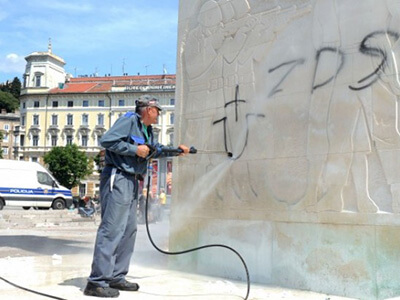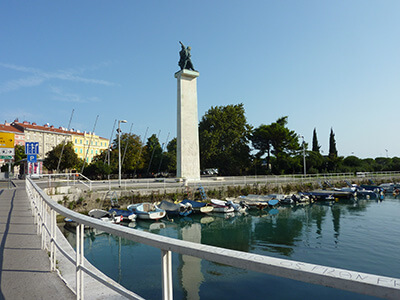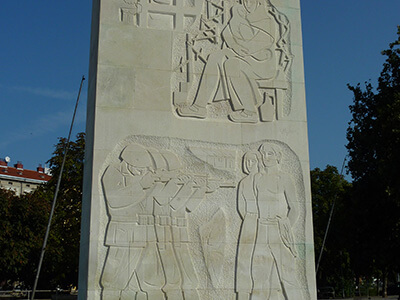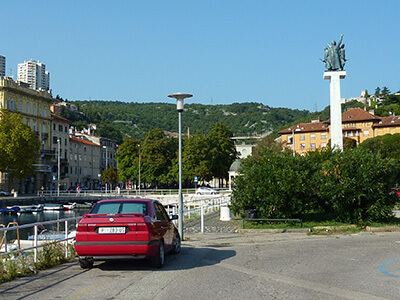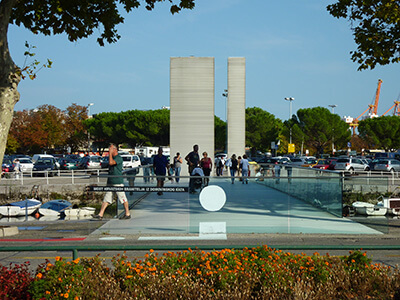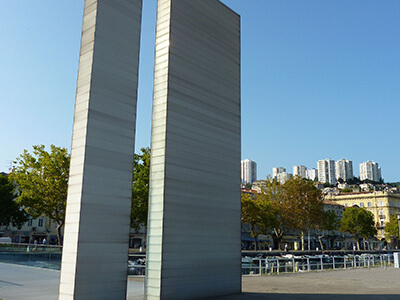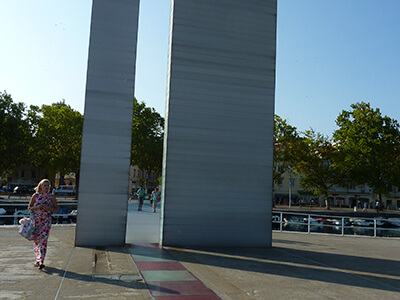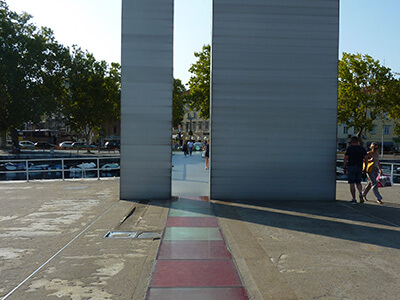
Rijeka
CZ/ENGThe Liberation Monument
Looking down on the age-old border between historic Rijeka and the Sušak neighborhood, the Liberation Monument rises 20 meters into the air. This characteristic construction of socialist realism was built in 1955, on the occasion of the 10th anniversary of Rijeka’s liberation from the Nazi occupation. The central female figure is surrounded by a group of partisan fighters, all symbolizing victory and faith in a better future. The T-shaped column refers to the main figure of the partisan resistance, and later, socialist Yugoslavia: Josip Broz Tito. A square not far away is also named after him, even to this day. After a decade, the liberation monument illustrated the victory over fascism and the post-war reunification of Yugoslavia. In 2015, an inscription of thanks was placed on the monument, to the liberators from the Primorje-Gorski Kotar County, Dalmatian, and North Dalmatian strike divisions — that is, exclusively the partisan units that came from what is now Croatia. In May of 2018, after a boisterous celebration by some local high school graduates, Ustaše symbols and slogans appeared on the monument. It’s apparent that this striking structure is taking on new meanings in today’s Croatia.
“The Bridge of Croatian Defenders in the Patriotic War”
In Rijeka, a footbridge commemorates the “Patriotic War,” as the war for independence is called in Croatia. Since 2001, this steel bridge has connected the historic center of the city with the former harbor. Along with two vertical columns, the bridge is dedicated to the memory of the soldiers who left from the shores of the “Dead Channel” to “defend the fatherland and fight for freedom.” This construction garnered several architectural prizes in Croatia and abroad. Besides just locals’ everyday errands, the bridge is also used as a place of reverence. Its symbolism allows it to perform this function: the space between the vertical columns represents the freedom won during the war. The nine red squares placed on the sidewalk between the columns represent the checkerboard national emblem and, at the same time, nine centuries of Croatian history. Here, the foundation of independent Croatia is represented as a natural continuation of Croatian history. The bridge, as the memorial plaque states, should therefore represent the first step into a new freedom, for which the defenders of Croatia sacrificed their lives.
